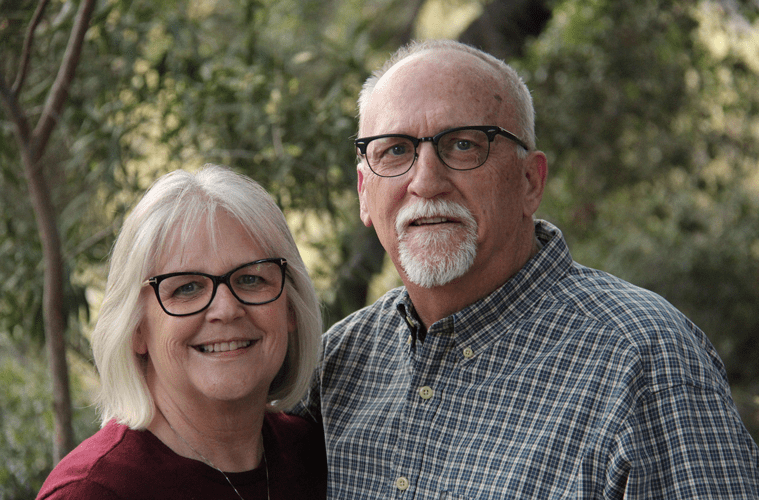Listen to this article
Listen to this article
Loading
Play
Pause
Options
0:00
-:--
1x
Playback Speed- 0.5
- 0.6
- 0.7
- 0.8
- 0.9
- 1
- 1.1
- 1.2
- 1.3
- 1.5
- 2
Audio Language
- English
- French
- German
- Italian
- Spanish
Open text
why churches should be talking more about social entrepreneurship. it is common to assign an entrepreneurial spirit to young people, who readily align themselves with the values associated with entrepreneurship, particularly social entrepreneurship—that “triple bottom line” way of doing business that insists on doing good and doing well at the same time. the picture is complex; entrepreneurial ventures were up 60 percent in the united states between 2011–2012, and universities have increased the number of entrepreneurship classes by a factor of 20 since 1985. similar trends are found among those bringing together entrepreneurship and philanthropy. the term social entrepreneur is fewer than 20 years old (duke university business professor gregory dees coined the phrase in 1998) yet by 2012 forbes magazine had christened social entrepreneurship as “the new black.” the entrepreneur-tracking kauffman foundation notes that more than half (54 percent) of young adults say they want to start a social enterprise, and about one in four (24 percent) already have. so why is it, then, that testimony before the u.s. senate in june 2016 noted that “millennials are on track to be the least entrepreneurial generation in recent history”? analysis released by the federal reserve showed that the number of people under the age of 30 who own businesses is currently at a quarter-century low. (the age of 40 turns out to be the sweet spot for starting your own enterprise, not 25.) apparently, would-be millennial entrepreneurs are spending their early years in the labor force working on other people’s innovations instead of their own. combine a generation known for being risk averse with astronomical levels of student debt and an economy where global industrial giants eat small coffee shops for breakfast, and you get a labor force full of young people who want to be entrepreneurs…eventually. until then, they work for people who already are entrepreneurs, learning the ropes, creating what one journalist described as a “dormant volcano of entrepreneurship that will erupt in about a decade.”. and then there’s the church. those of you who, like me, spend a lot of time with young people in the church, will recognize that this entrepreneurial spirit is not limited to college business majors. missional innovation and entrepreneurship is a conversation that is gathering strength among young people. it has an economic dimension because it assumes sustainability—somehow today’s ministry innovations must survive apart from patronage and philanthropy. what is different about the way these missional entrepreneurs do stewardship from my generation is that their economic models are not simply ways to fund their ministries; they are their ministries. if you have a food truck, for example (my church, which is 80 percent millennials, does this as a form of campus ministry), it is not just the way you fund the cost of hanging out with college students—the food truck is how you hang out with college students. the economic model is itself a form of ministry. the food truck is a way to engage with people in our community—bakers, mechanics, zoning officials, organic farmers—whom we would never know otherwise, it’s a path to creative witness, it’s a vehicle (in our case, literally) that allows us to share our life with them, and vice versa. and somewhat by accident, since we happen to be a tiny church of 75 people made up of students and old people who had no choice but to fund mission in this way, this form of witness turns out to be deeply and rigorously, wholistically and historically, christian in that it is not your job that makes you a minister, it is your life. what is ironic is that many young people seeking this kind of life are going, not to the church, but to toms shoes to find it. three moments frame our current discussion about missional innovation and entrepreneurship in the church. first, this conversation is made possible by the fact that many sectors of the american church, particularly older established mainline sectors, currently feel quite insecure about their future—which gives us an opening to reimagine what it means to be the church in our culture in the first place. many established faith communities are willing to take risks today that were unthinkable a decade ago. second, this entrepreneurial moment in the church must not be construed as a bid for institutional self-preservation. missional innovation will not save the church. only jesus christ saves the church. but you could make the case that jesus’ first followers were an entrepreneurial lot, gathering familiar religious teachings in unimagined ways that gave rise to entirely new faith communities, patterned on the self-giving love they saw embodied in the life, death, and resurrection of jesus christ—and that should give us abundant permission to do the same. finally, we may lament the current condition of the institutional church—yet i consider this to be the church’s best opportunity in 500 years to be reshaped into the church we are called to be. the church’s one foundation is secure, yet the bolts are loose and a new generation of designers and builders stand at the ready. the only question their entrepreneurial spirit forces us to reckon with is this: just how much of what we have learned to call “church” are we willing to let go of in order to follow jesus? what must motivate all ministry, innovative or otherwise, is the gut-punch of love, a heart that breaks for someone else, a recognition that god has planted within us a nagging, relentless need to lessen young people’s suffering, and amplify their joy, by showing them christ. this inevitably is an adaptive, not a technical, challenge for innovation, and if there is one missional entrepreneur who embodies that impulse, it is maggy barankitse. barankitse is the founder of maison shalom, a youth village that began in burundi during burundi’s brutal civil war. barankitse, a tutsi and a catholic, worked at the bishop’s office in ruyigi when the militia—acting on a tip that the bishop’s office was harboring hutus—stormed the compound with machetes, intent on killing everyone involved. barankitse hid her seven adopted children in the sacristy cupboards to keep them alive. incredibly, the soldiers did not murder barankitse because she was a tutsi; instead, they forced her to watch them murder 72 people, including her best friend juliet. juliet’s last words asked barankitse to love and educate her children as if they were her own. when the soldiers finally untied barankitse, she bribed them to free 25 more children. on that day, barankitse became mother to 32 children whom she was determined to shelter, feed, and educate—while raising them to forgive their enemies in the name of jesus christ. soon maison shalom became an oasis and home for more than 30,000 war orphans. barankitse ran the orphanage as a village, organized into households of older and younger children who looked after one another as families. she started several small businesses to meet their needs—a farm, a mechanic’s school, a tailor’s shop, a hospital, a hair salon, a mortuary, an international school, to name a few—which provided jobs and generated revenue to support the venture. while grateful for donations of food and clothing, barankitse was determined to restore children’s ability to dream as well as survive. so she built a movie theater and a swimming pool. she intentionally built the swimming pool on the killing field where she had watched the militia murder 72 of her friends. when asked about the origin of her innovative vision for maison shalom, barankitse says simply: “love made me an inventor.”. maison shalom is an inspiring story, a heroic response to tragedy. is it the church? i believe the answer is yes: this is what the body of christ looks like—and that motivated by love, emergent spiritual communities will inevitably take on all sorts of creative shapes we have not always associated with “church.” gregory dees, who knew the historical connection between entrepreneurship and the church, was mystified by what he perceived to be the contemporary church’s disinterest in social entrepreneurship. “what happened to the church?” dees asks. “the field i am now associated with, social entrepreneurship, emerged in business schools in part because of the decline of interest by the church.”. it was not always this way. in the middle ages, it was the church, not silicon valley, that was the engine of social innovation, as christian communities founded schools and hospitals and hospices to glorify god. monasteries created sustainable agricultural practices, perfected consumer products like cheese, and sought to create sustainable communities that would not burden the poor, but could model a way of life worthy of the name “christian.” monasteries and convents served as incubators for social reform. monks and nuns—frequently the only people in town who could read or write—experimented with new forms of art, music, education, spiritual practices, and forms of citizenship (the civic orders promoted by the enlightenment were largely inspired by the practices of monastic communities). when a medieval young person (especially women) wanted to flee social norms or create something new or make a difference in the world, he or she dreamed of giving his or her life to the church, not toms shoes. what happened? the simple story is this: with the onset of modernity, we became a highly differentiated society. as society became more complex, we carved up job descriptions, and labeled the church’s activities “spiritual” and business activities “profane.” not only did we stop learning from each other’s expertise, we learned to be suspicious of one another’s motives. without the ethical constraints of religious teaching, business could (and often did) become unmoored from moral responsibility. without the community relationships required by business, churches could (and often did) become insular and self-absorbed. today, the lines separating spheres of influence are blurring once again, causing churches to reconsider their relationship with entrepreneurship. sometimes churches venture into this conversation with questionable motives: we want our church to jump on the latest trend, or we want entrepreneurship to “save the world” (or the church), or we think missional enterprise will solve our church’s financial or marketing problems. but in the end, there is one—and only one—reason to make missional entrepreneurship central to your ministry: love…because when you love someone, you will spin straw into gold to stop them from suffering. you will take a moon shot to restore joy for young people you love. you will build a maison shalom to help children flourish, and a swimming pool to redeem the killing fields. the only reason to become a missional entrepreneur is because, like maggy barankitse, love makes you an inventor. not your love; christ’s love. and then not even death can stop you. see more about how ministry incubators helps creative people and congregations transform ideas for ministry into sustainable social enterprises at ministryincubators.com.
Open context player
Close context player
Plays:-Audio plays count
why churches should be talking more about social entrepreneurship. it is common to assign an entrepreneurial spirit to young people, who readily align themselves with the values associated with entrepreneurship, particularly social entrepreneurship—that “triple bottom line” way of doing business that insists on doing good and doing well at the same time. the picture is complex; entrepreneurial ventures were up 60 percent in the united states between 2011–2012, and universities have increased the number of entrepreneurship classes by a factor of 20 since 1985. similar trends are found among those bringing together entrepreneurship and philanthropy. the term social entrepreneur is fewer than 20 years old (duke university business professor gregory dees coined the phrase in 1998) yet by 2012 forbes magazine had christened social entrepreneurship as “the new black.” the entrepreneur-tracking kauffman foundation notes that more than half (54 percent) of young adults say they want to start a social enterprise, and about one in four (24 percent) already have. so why is it, then, that testimony before the u.s. senate in june 2016 noted that “millennials are on track to be the least entrepreneurial generation in recent history”? analysis released by the federal reserve showed that the number of people under the age of 30 who own businesses is currently at a quarter-century low. (the age of 40 turns out to be the sweet spot for starting your own enterprise, not 25.) apparently, would-be millennial entrepreneurs are spending their early years in the labor force working on other people’s innovations instead of their own. combine a generation known for being risk averse with astronomical levels of student debt and an economy where global industrial giants eat small coffee shops for breakfast, and you get a labor force full of young people who want to be entrepreneurs…eventually. until then, they work for people who already are entrepreneurs, learning the ropes, creating what one journalist described as a “dormant volcano of entrepreneurship that will erupt in about a decade.”. and then there’s the church. those of you who, like me, spend a lot of time with young people in the church, will recognize that this entrepreneurial spirit is not limited to college business majors. missional innovation and entrepreneurship is a conversation that is gathering strength among young people. it has an economic dimension because it assumes sustainability—somehow today’s ministry innovations must survive apart from patronage and philanthropy. what is different about the way these missional entrepreneurs do stewardship from my generation is that their economic models are not simply ways to fund their ministries; they are their ministries. if you have a food truck, for example (my church, which is 80 percent millennials, does this as a form of campus ministry), it is not just the way you fund the cost of hanging out with college students—the food truck is how you hang out with college students. the economic model is itself a form of ministry. the food truck is a way to engage with people in our community—bakers, mechanics, zoning officials, organic farmers—whom we would never know otherwise, it’s a path to creative witness, it’s a vehicle (in our case, literally) that allows us to share our life with them, and vice versa. and somewhat by accident, since we happen to be a tiny church of 75 people made up of students and old people who had no choice but to fund mission in this way, this form of witness turns out to be deeply and rigorously, wholistically and historically, christian in that it is not your job that makes you a minister, it is your life. what is ironic is that many young people seeking this kind of life are going, not to the church, but to toms shoes to find it. three moments frame our current discussion about missional innovation and entrepreneurship in the church. first, this conversation is made possible by the fact that many sectors of the american church, particularly older established mainline sectors, currently feel quite insecure about their future—which gives us an opening to reimagine what it means to be the church in our culture in the first place. many established faith communities are willing to take risks today that were unthinkable a decade ago. second, this entrepreneurial moment in the church must not be construed as a bid for institutional self-preservation. missional innovation will not save the church. only jesus christ saves the church. but you could make the case that jesus’ first followers were an entrepreneurial lot, gathering familiar religious teachings in unimagined ways that gave rise to entirely new faith communities, patterned on the self-giving love they saw embodied in the life, death, and resurrection of jesus christ—and that should give us abundant permission to do the same. finally, we may lament the current condition of the institutional church—yet i consider this to be the church’s best opportunity in 500 years to be reshaped into the church we are called to be. the church’s one foundation is secure, yet the bolts are loose and a new generation of designers and builders stand at the ready. the only question their entrepreneurial spirit forces us to reckon with is this: just how much of what we have learned to call “church” are we willing to let go of in order to follow jesus? what must motivate all ministry, innovative or otherwise, is the gut-punch of love, a heart that breaks for someone else, a recognition that god has planted within us a nagging, relentless need to lessen young people’s suffering, and amplify their joy, by showing them christ. this inevitably is an adaptive, not a technical, challenge for innovation, and if there is one missional entrepreneur who embodies that impulse, it is maggy barankitse. barankitse is the founder of maison shalom, a youth village that began in burundi during burundi’s brutal civil war. barankitse, a tutsi and a catholic, worked at the bishop’s office in ruyigi when the militia—acting on a tip that the bishop’s office was harboring hutus—stormed the compound with machetes, intent on killing everyone involved. barankitse hid her seven adopted children in the sacristy cupboards to keep them alive. incredibly, the soldiers did not murder barankitse because she was a tutsi; instead, they forced her to watch them murder 72 people, including her best friend juliet. juliet’s last words asked barankitse to love and educate her children as if they were her own. when the soldiers finally untied barankitse, she bribed them to free 25 more children. on that day, barankitse became mother to 32 children whom she was determined to shelter, feed, and educate—while raising them to forgive their enemies in the name of jesus christ. soon maison shalom became an oasis and home for more than 30,000 war orphans. barankitse ran the orphanage as a village, organized into households of older and younger children who looked after one another as families. she started several small businesses to meet their needs—a farm, a mechanic’s school, a tailor’s shop, a hospital, a hair salon, a mortuary, an international school, to name a few—which provided jobs and generated revenue to support the venture. while grateful for donations of food and clothing, barankitse was determined to restore children’s ability to dream as well as survive. so she built a movie theater and a swimming pool. she intentionally built the swimming pool on the killing field where she had watched the militia murder 72 of her friends. when asked about the origin of her innovative vision for maison shalom, barankitse says simply: “love made me an inventor.”. maison shalom is an inspiring story, a heroic response to tragedy. is it the church? i believe the answer is yes: this is what the body of christ looks like—and that motivated by love, emergent spiritual communities will inevitably take on all sorts of creative shapes we have not always associated with “church.” gregory dees, who knew the historical connection between entrepreneurship and the church, was mystified by what he perceived to be the contemporary church’s disinterest in social entrepreneurship. “what happened to the church?” dees asks. “the field i am now associated with, social entrepreneurship, emerged in business schools in part because of the decline of interest by the church.”. it was not always this way. in the middle ages, it was the church, not silicon valley, that was the engine of social innovation, as christian communities founded schools and hospitals and hospices to glorify god. monasteries created sustainable agricultural practices, perfected consumer products like cheese, and sought to create sustainable communities that would not burden the poor, but could model a way of life worthy of the name “christian.” monasteries and convents served as incubators for social reform. monks and nuns—frequently the only people in town who could read or write—experimented with new forms of art, music, education, spiritual practices, and forms of citizenship (the civic orders promoted by the enlightenment were largely inspired by the practices of monastic communities). when a medieval young person (especially women) wanted to flee social norms or create something new or make a difference in the world, he or she dreamed of giving his or her life to the church, not toms shoes. what happened? the simple story is this: with the onset of modernity, we became a highly differentiated society. as society became more complex, we carved up job descriptions, and labeled the church’s activities “spiritual” and business activities “profane.” not only did we stop learning from each other’s expertise, we learned to be suspicious of one another’s motives. without the ethical constraints of religious teaching, business could (and often did) become unmoored from moral responsibility. without the community relationships required by business, churches could (and often did) become insular and self-absorbed. today, the lines separating spheres of influence are blurring once again, causing churches to reconsider their relationship with entrepreneurship. sometimes churches venture into this conversation with questionable motives: we want our church to jump on the latest trend, or we want entrepreneurship to “save the world” (or the church), or we think missional enterprise will solve our church’s financial or marketing problems. but in the end, there is one—and only one—reason to make missional entrepreneurship central to your ministry: love…because when you love someone, you will spin straw into gold to stop them from suffering. you will take a moon shot to restore joy for young people you love. you will build a maison shalom to help children flourish, and a swimming pool to redeem the killing fields. the only reason to become a missional entrepreneur is because, like maggy barankitse, love makes you an inventor. not your love; christ’s love. and then not even death can stop you. see more about how ministry incubators helps creative people and congregations transform ideas for ministry into sustainable social enterprises at ministryincubators.com.
Listen to this article




















Dear Kenda,
Thank you for a great article. As a christian and a manager of a social and non-profit enterprise, this article gave me some insights that I have had a hard time to put words on myself.